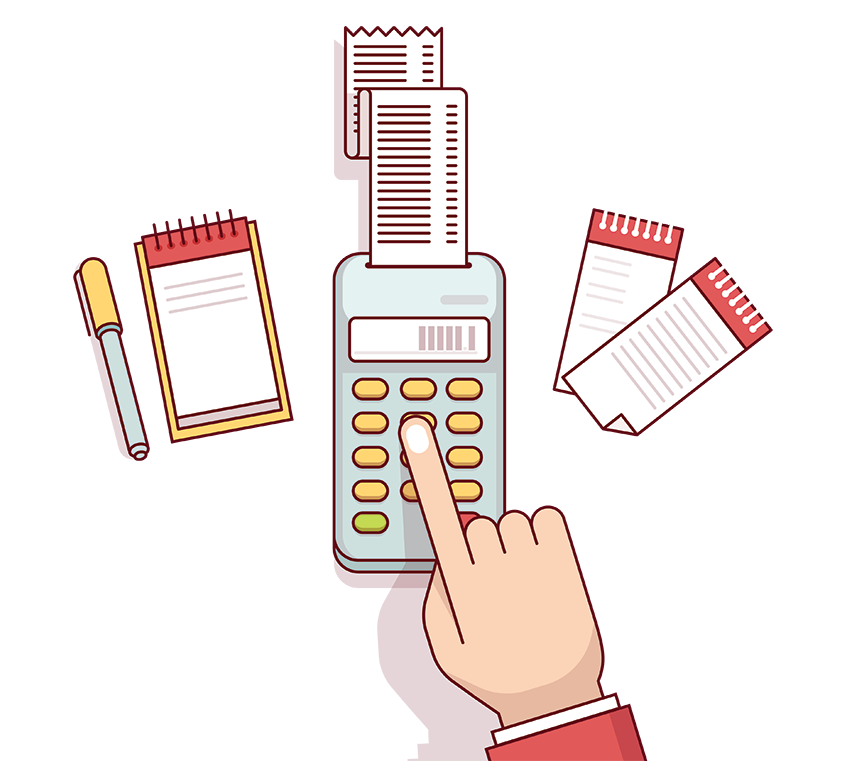Possibly one of the most frustrating aspects of running your own business is chasing up late payments. Whether you’re the one chasing or if you hire someone to manage the task, there is always a tightrope to walk to ensure that you get paid without losing clients.
Late payments have a knock-on effect across the business, which can be highly disruptive. Pursuing unpaid invoices means:
- more time is spent on financial admin that could be allocated to business growth activities
- money is wasted on the stationery required to post out letters, telephone bills as well as any fees your business incurs if you miss your own payments, go into an overdraft or have to take out a loan to cover a deficit in your funds
- cash flow is impacted and you can’t pay staff, suppliers or other business overheads
- forecasting becomes impossible as you can’t plan for business development because you simply don’t know when you’ll have the cash available
- the absolute worse could happen and your business is no longer viable and so fails
Asking for money can feel awkward or impolite, but you’re completely entitled to do it. You’ve done the work, supplied the service or shipped the product. Thankfully, there are some tried and tested ways to tackle this issue.
Here are our best tactics for chasing up late payments.
First, Remember You’re Not Alone
 Chasing delayed payments impacts sole traders and multi-nationals alike. From IT firms to the office equipment leasing sector, no industry is immune.
Chasing delayed payments impacts sole traders and multi-nationals alike. From IT firms to the office equipment leasing sector, no industry is immune.
Remembering that you’re not alone and that others have gone through the same, helps to put things into perspective. According to recent research, there are 5.7million SMEs in the UK who are chasing a combined total of £14.9billion.
This late payment culture has become a crisis in the UK. SMEs underpin the economy, employing 16 million people. Pressure is being put on the government to tackle this alarming trend, with 61% of SME owners wanting a change in the law for late payments.
This is an issue faced by firms across the country and is one that is being emphasised and discussed openly. Take heart in the fact that you’re not a special case, and there is nothing wrong with your business or process – every organisation has likely had to chase a late payment at least once.
Tactic 1: Set Out Clear Payment Terms and Conditions
 One way to minimise late payments and to help lessen the awkward feeling when chasing them, is to set out clear terms and conditions with your client from the outset.
One way to minimise late payments and to help lessen the awkward feeling when chasing them, is to set out clear terms and conditions with your client from the outset.
Before you start work with a new client, mutually agree to the payment terms. These could be payment upfront, 50% upfront and 50% on completion or 100% on completion. Payment terms could be 10, 30 or 60 days from the date of the invoice.
Whatever terms you agree to, make sure there is an unquestionable paper trail showing that both parties have agreed to the terms. It’s easier to chase a late payment when you can start with, “As we agreed, the payment terms are 10 days and we’re now on 15…”
Include the agreed terms and conditions on the invoice, so that they are transparent and can’t be missed.
Tactic 2: Add Charges to Late Payments
 Many businesses are now adding late payment interest charges to their invoices. This is an approved method by the government. You can use your own discretion as to what interest you charge, however you’re entitled to charge statutory interest of 8% plus the Bank of England base rate, currently 0.5%. So, a total of 8.5%.
Many businesses are now adding late payment interest charges to their invoices. This is an approved method by the government. You can use your own discretion as to what interest you charge, however you’re entitled to charge statutory interest of 8% plus the Bank of England base rate, currently 0.5%. So, a total of 8.5%.
For example, if your payment terms are 30 days and you don’t receive payment, you can add 2% to the total invoice. And then for each 30-day recurring period an additional 2% is added. Or you could include a one-off 5% ‘late payment charge’ to the invoice.
These additional charges can help with prompter payment, as most customers won’t want to pay more. They also go towards covering the time and money you’ll spend chasing up their invoice.
Clearly note these charges in your terms and conditions and flag them to your clients at the start of your working relationship. After adding an incurred interest penalty to a client bill, send a new invoice with the updated amount.
As part of the late payment legislation, you can also stipulate that you’ll charge a client a fixed sum for ‘debt recovery costs’ on top of the interest charges. These charges are standardised and start at £40 for an invoice up to £999.99.
Tactic 3: Send Correct Invoices on Time and to the Right Person
Every client will be different when it comes to receiving invoices. Make sure you have a standard invoice template, that includes everything required. There is a checklist here.
Liaise with your client before work starts to confirm if there is anything else that they require on your invoice. This could include a purchase order number or another identifying reference. They might want you to include a detailed list of the work completed with timesheets or to split out the labour and the goods/materials on separate lines. Follow your client’s prerequisites precisely so that your invoice can be processed without any delays.
Find out who to send the invoice to. Your day-to-day contact might not be the correct person. And confirm when to send the invoice. You might normally send it as soon as the job is finished, however your client might prefer a longer project to be split into weekly sums and invoices to be sent each week on a Friday by midday.
Follow your client’s specific payment process to the letter and you’re more likely to be paid on time. If you’ve sent an invoice to their exact requirements, and they haven’t paid, then you’ll feel more confident in chasing as you’ll know the delay isn’t through any error or oversight on your part.
Tactic 4: Build Rapport with Your Client Contact
 Building a personable relationship with your day-to-day client not only improves your chances of getting paid on time, but also helps you when chasing up an unpaid invoice. Friends don’t like to let other friends down, especially if you’ve proved your value and provided a quality service.
Building a personable relationship with your day-to-day client not only improves your chances of getting paid on time, but also helps you when chasing up an unpaid invoice. Friends don’t like to let other friends down, especially if you’ve proved your value and provided a quality service.
If you’re dealing with another staff member in the finance team, but aren’t getting very far, then a friendly call to your contact – the person who benefits the most from the value your business provides – can work wonders. Ask them politely if they could look into your payment and thank them when they do.
An internal nudge to a finance department could help to release your funds into your bank account quicker.
Tactic 5: Offer Convenient Payment Methods
Not all customers are created equal. Some might prefer to pay by cheque, some by bank transfer, some using a credit card over the phone. Offering a number of convenient payment options can help to reduce late payers.
If your business collects recurring monthly payments from customers, then you should consider using Direct Debit to collect the monies. This automated service is secure, popular and easy to use. Many clients might simply forget to pay each month, so by automating this for them, it means you’ll always get your monthly payments on time.
Automating the collection of monthly payments by setting up a Direct Debit scheme has numerous advantages, read more in this article: Benefits of Direct Debit for Business, Customer Loyalty & Predictable Revenue.
Tactic 6: Agree to Payment Instalments
When a client has all intention of paying but can’t cover the invoice total on the date it’s due, consider setting up regular payment instalments rather than taking the full lump sum. You could charge interest on a payment plan if it’s over a long period of time.
Agreeing to payments in smaller instalments spread across an approved timeframe is an improvement on not getting paid at all. If you can set these up as Direct Debits, then the collection is automated and therefore hassle-free for both you and your customer.
Offering the flexibility of more manageable payments to clients can help to foster goodwill and you can look forward to cash injections into your bank account on set dates.
Tactic 7: Email Communications
 When an invoice becomes overdue, the first thing to do is to send a friendly but firm email. Often there is a simple oversight and the payment will be made swiftly.
When an invoice becomes overdue, the first thing to do is to send a friendly but firm email. Often there is a simple oversight and the payment will be made swiftly.
The first email needs to be short, informative and include all the relevant information about the invoice so that the client can easily identify it within their own finance systems e.g. by including the purchase order number in the email subject. Send this email a day after the payment deadline.
If you still haven’t received payment after one week, then send a second email. After this second email, use your own best judgement as to how far apart you send the following emails (two to three days, to one week). Flag if any charges will be incurred as per your terms and conditions.
The tone of each email should gradually get stronger. If you’re unsure how to phrase these emails, there are plenty of email scripts and templates available for free online.
Tactic 8: Phone Communications
If you’ve sent five emails and not had any response, it’s time to move onto the phone.
Speaking to someone is more direct, and your client can’t ignore you as easily as with an email. If your customer won’t answer your call then be persistent, keep calling until they do. Leave voicemails and messages with the receptionist or other employees.
You should start off by being polite but firm with your first conversation. Ask direct questions that prompt an answer such as:
- “When do you think my payment will be made?”
- “Is there anything I can do to help speed things up?”
- “Is there anyone else I need to talk to about this late payment?”
Be informative and helpful by giving the contact the invoice details including payment date, days it’s now overdue by, invoice total and client identifier reference. Emphasise if there are any additional charges that might be added and when.
Ideally get a date from your customer as to when they will make the payment. If payment isn’t made on this date, then phone again immediately and keep chasing. It’s not appropriate to become aggressive or emotional when chasing money even though it’s stressful and frustrating. Try to remain calm and professional at all times.
Tactic 9: Written Communications
 If you’ve reached a dead-end with emails and phone calls, then it’s time to send a formal letter as a final warning. This is the final late payment communication that informs your customer of a final cut-off date for payment before you take further action.
If you’ve reached a dead-end with emails and phone calls, then it’s time to send a formal letter as a final warning. This is the final late payment communication that informs your customer of a final cut-off date for payment before you take further action.
Include in this letter all the relevant information as well as details about any additional interest charges incurred or late payment penalties. Make clear the final cut-off date that you expect payment to be made by and detail the action you’ll take if the monies are still not received.
This letter must be professionally written and non-threatening. Send it by recorded and signed-for post or courier so that you have proof of the date it was sent and confirmation that it was received. Look online for letter templates and examples.
Tactic 10: Take Further Action
If all else fails, then it’s time to take further action. At this point, the communication and relationship between you and your customer has likely completely broken down.
There are a few options for you to consider as next steps:
- Hire an impartial mediator
- Make a court claim
- Make an online court claim (if the money owed is less than £100,000)
- Serve a statutory demand in-person or using a solicitor
- Apply to make your customer bankrupt to recover money owed
- Get your customer’s company wound up (liquidated)
- Instruct a lawyer to send a letter on your behalf and manage legal proceedings
- Hire a debt collection agency
- Look for official groups and bodies in your industry that help to mediate and collect outstanding monies
There is more information here about the legal action you can take, including the potential cost implications. And if you’d like free advice or financial help you can contact the Business Support Helpline.
Don’t Give Up
Chasing unpaid invoices can be stressful, disheartening and time-consuming. These tried and tested tactics will help you to minimise late payments and handle them efficiently and professionally. With a clear procedure and process in place, your business will boom rather than go bust.












